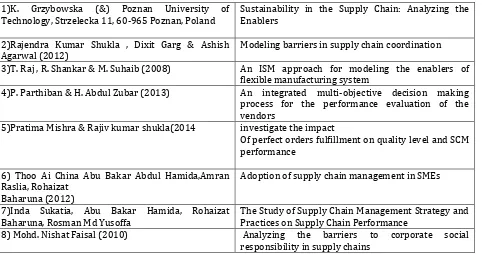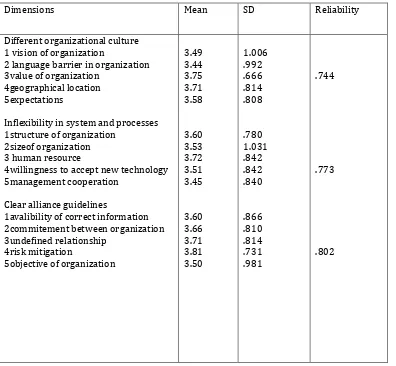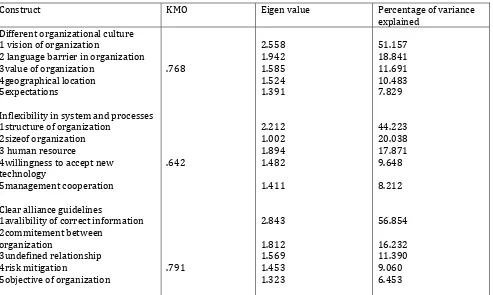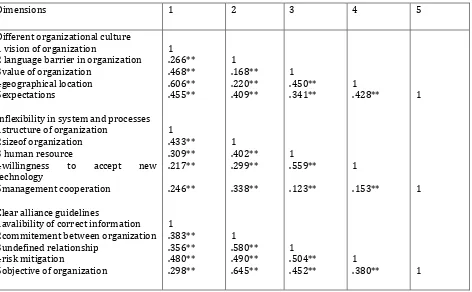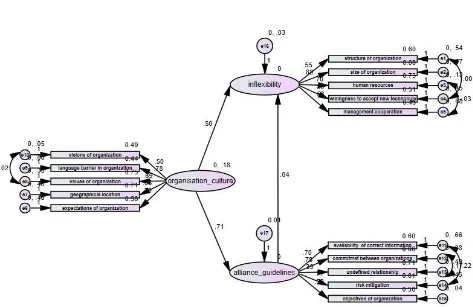© 2016, IRJET | Impact Factor value: 4.45 | ISO 9001:2008 Certified Journal | Page 3262
Quantitative analysis of model supply chain coordination risks
Prashant Chauhan
1,Sachin Pal Singh
2, Saurabh Kumar Nagar
31
Professor , Department of mechanical engineering, JSS academy of technical education, Noida 201301, Uttar Pradesh,
India
2
Student, Department of mechanical engineering, JSS academy of technical education, Noida 201301, Uttar Pradesh,
India
3
Student, Department of mechanical engineering, JSS academy of technical education, Noida 201301, Uttar Pradesh,
India
Abstract
.
Supply chain management has become an important factor for organizations supply chain coordination can be defined as an act of managing dependencies between entities working together towards mutually defined goals. There are variables which affect supply chain coordination and optimization in supply chain at different stages. Supply chain coordination provides risk reduction, access to resources, competitive advantages. The barriers in supply chain are generally depend on each other and have influence over effect of each other and also have adverse affect on supply chain. The main objectives of papers are to select one of the set of the crucial barriers and to find out the relationship between these barriers and then quantify that relationship. First to develop the relationship between these barriers we will use ISM (interpretive structural modeling) and Construct a model showing relationship between these barriers and then depending on the model we will construct a questionnaire to gather the data required for the quantification of relationship between the barriers. The quantification between the barriers will be done by the software of IBM the software will use are AMOS and SPSS.Key words
:
coordination, barriers, interpretive structural modeling, supply chain management, AMOS, SPSS, SEM1.
Introduction
Today, in the world of globalization the role of supply chain for a business firm has become more important than ever to provide competitive advantage over other firms. The improved significance of SCM can be attributed to several forces driving global outsourcing and an emphasis on quality during a period of great competition and environmental uncertainty (Mentzer, 2001).Supply chain has become an important focus of competitive advantage for organization business.
Supply chain is a group of organizations working together towards achieving common goal and customer satisfication. The Supply Chain is a concept designed to manage entire supply chains consisting of numerous participating organizations (Mentzer et al. 2001, p. 7).
A supply chain consists of a network of organizations that are involved in different processes and activities that produce value in the form of products and services in the hands of the ultimate consumer (Christopher 1998). The Supply Chain is a metastructure (Grzybowska 2010b). A metastructure is an intermediate form between a single enterprise (microstructure) and global economy (macrostructure). A metastructure is characterized by a dynamic holarchy of cooperating holons. The supply chain includes manufacturer, suppliers, transporters, warehouses, retailers and even customers themselves. Within each organization, such as a manufacturer, the supply chain includes all function involved in receiving and filling a customer request. These functions includes new product development, marketing, operation, distribution, finance, customer service and other function that related to serving customer request (Chopra and Meindl, 2007).
© 2016, IRJET | Impact Factor value: 4.45 | ISO 9001:2008 Certified Journal | Page 3263
The main focus of SCM is to provide right product to the right customers at the right cost, right time, right quality and right quantity (Basher, 2010). Meanwhile, the short-term strategic goal of SCM is to reduce cycle time and inventory and thus increasing productivity, whereas the long-term goal is to enhance profits through market share and customer satisfaction (Tan, 2002).Supply chain coordination provides risk reduction, access to resources, and competitive advantage. Uncoordinated decision-making creates inefficiency with the channel members’ profits significantly lower for each channel member independently and collectively than what could be achieved with coordination, Jorgensen and Zaccour (2003) [33]. Quantified benefits of SCM include lower supply chain costs, overall productivity, inventory reduction, forecast accuracy.
The coordination between organizations is hindered due to different reasons these reasons are known as barriers. There are a number of barriers present in an organization. There are barriers which affect not only coordination in the supply chain, but also influence one another. It is, there- fore, important to understand their mutual relationship so that those barriers that are at the root (called driving barriers) and those which are most influenced by others (called driven barriers) are identified. Shukla et al (2013) has defined fourteen barriers which are the root barriers in a supply chain.
Generally ISM technique is being used for defining relationship between directly and indirectly related elements in a model. It is a well established methodology for identifying relationships among specific items, which define a problem or an issue (Warfield, 1974 [89]; Sage, 1977 [68]).But the restriction with ISM is that it is only able to define relationship but it does not quantify the relationship. So as to quantify the relationship we will use structural equation modeling (SEM). SEM is able to quantify the relationship but does not able to quantify them .It is a family of statistical methods designed to test a conceptual or theoretical model.
1.1
Selection of barriers
Kumar Shukla, Garg & Agarwal (2013) defined 14 major barriers in supply chain and defined them as follows
1. Different organizational Culture 2. Cross-functional Conflicts 3. Poor supply Chain Planning
4. Lack of Channel trust and commitment 5. Lack of Top management Commitment 6. IT deficiencies
7. Lack of coherent Contracts
8. Lack of meeting, cooperation and technical assistance 9. Resistance to Share Information
10. Inflexible organizational systems and processes 11. Resistance to change and adopt innovations 12. Lack of clear alliance guidelines
These barriers are classified in 4 categories
(1) Autonomous barriers: These are those barriers which have weak driver power and weak dependence. They seem to be disconnected from the system, with which they have few strong links.
(2) Linkage barriers: These are the barriers which have strong driver power as well as strong dependence. They are also unstable. Any action on them has an effect on other barriers and also a feedback effect on themselves.
(3) Dependent barriers: These are those barriers which have weak driver power but strong dependence power.
© 2016, IRJET | Impact Factor value: 4.45 | ISO 9001:2008 Certified Journal | Page 3264
Based on this classification we have selected the independent barriers as they can affect other are the cause for other barriers .And they themselves are independent of other barriers. So we have selected three barriers for further study. The barriers selected are1 different organizational culture
2 inflexible organizational systems and processes 3 lack of clear alliance guidelines
1.2 An introduction to ISM (interpretive structural modeling)
ISM is one of the interactive management methods which assist research groups in dealing with complex issues (Warfield 1974, 1990). ISM transforms unclear, poorly articulated mental models of a system into visible well defined, hierarchal models. It is a well known methodology for identifying and summarizing relationships among specific elements, which define an issue or a problem, and provide a means by which order can be imposed on the complexity of such elements (Mandal and Deshmukh 1994).. ISM is an interpretive tool based on a group’s judgment and the decision as to whether or how the system’s elements are linked to each other. It is structurally constructed on the relationship’s foundation as well as the final structure exploited from the complex set of the system’s variables. It is also a modeling tool, as the final relationship is explained in a directed graphical model.
ISM can transform a group of directly and indirectly related elements into a well defined structure. a relationship between directly and indirectly related items tend to make a structure very complex but by using an ISM approach the structure can be given a direction and a well defined meaning.
Steps in ISM
(1) The first step is to identify the elements which are relevant to the problem or issue with the help of a questionnaire and enlist them.
(2) The identified elements will be used to establish contextual relationship among them. This represents the relationship indicating whether or not one element leads to another.
(3) The next step is to develop a pair wise relationship among the elements, for which a structural self-interaction matrix (SSIM) of sources will be developed.
(4) The next step is to develop a reachability matrix from the SSIM, and checking the matrix for transitivity. Transitivity of the contextual relation is basic assumption in ISM which states that if an element A is related to an element B, and element B is related to an element C, then A is necessarily related to C. The SSIM is transformed in the form of a reachability matrix by transforming the information in each entry of the SSIM into 1s and 0s in the reachability matrix.
(5) The reachability matrix obtained is further partitioned into different levels.
(6) From the relationships obtained in the reachability matrix, we will remove any transitive links and draw a directed graph. (7) Then we will replace element nodes with statements to construct the ISM model.
(8) The ISM model developed will be reviewed to check for conceptual inconsistency, and to make the necessary modifications.
1.3
Introduction to structural equation modeling (SEM)
© 2016, IRJET | Impact Factor value: 4.45 | ISO 9001:2008 Certified Journal | Page 3265
Table 1 of literature study for ISM study and supply chain management1)K. Grzybowska (&) Poznan University of
Technology, Strzelecka 11, 60-965 Poznan, Poland Sustainability in the Supply Chain: Analyzing the Enablers 2)Rajendra Kumar Shukla , Dixit Garg & Ashish
Agarwal (2012) Modeling barriers in supply chain coordination 3)T. Raj , R. Shankar & M. Suhaib (2008) An ISM approach for modeling the enablers of
flexible manufacturing system
4)P. Parthiban & H. Abdul Zubar (2013) An integrated multi-objective decision making process for the performance evaluation of the vendors
5)Pratima Mishra & Rajiv kumar shukla(2014 investigate the impact
Of perfect orders fulfillment on quality level and SCM performance
6) Thoo Ai China Abu Bakar Abdul Hamida,Amran Raslia, Rohaizat
Baharuna (2012)
Adoption of supply chain management in SMEs
7)Inda Sukatia, Abu Bakar Hamida, Rohaizat
Baharuna, Rosman Md Yusoffa The Study of Supply Chain Management Strategy and Practices on Supply Chain Performance 8) Mohd. Nishat Faisal (2010) Analyzing the barriers to corporate social
responsibility in supply chains
1.4
Objectives of the paper
Most of the papers reviewed have discussed the work by considering single barrier such as different organizational culture, inflexible organizational system and processes, lack of clear alliance guidelines on SCM performance. However, none of the previous studies have analyzed the impact or association of different organizational culture, inflexible organizational system and processes and lack of clear alliance guidelines impact together. Moreover, previous authors have not tested empirical relationship between these barriers and SCM performance. Based upon the above gaps found in the literature, the following research questions arise such as:
• What are the different dimensions of different organizational culture that significantly affect the inflexible organizational system and processes, lack of clear alliance guidelines in SCM in knowledge outsourcing firms in India?
• What are the empirical relationships between three selected barriers them? Based on these two research questions, the objectives of this paper are:
• To identify the dimensions of different organizational culture, inflexible organizational system and processes and lack of clear alliance guidelines that effect SCM.
• To empirically examine whether different organizational culture metrics have significant impact on SCM performance • To empirically test whether inflexible organizational system have significant impact on lack of clear alliance guidelines • To empirically test whether there is direct effect of inflexible organizational system and processes and lack of clear alliance guidelines on SCM performance
• To test whether overall hypothesized model has good fit.
© 2016, IRJET | Impact Factor value: 4.45 | ISO 9001:2008 Certified Journal | Page 3266
2. Literature background
Conceptual model Figure 1 presents the conceptual framework developed in this study, which is based on three main constructs, i.e.
1 Different organizational culture
2 Inflexible organizational systems and processes 3 Lack of clear alliance guidelines
The framework depicts that Different organizational culture have an impact on Inflexible organizational systems and processes directly and also indirectly with Lack of clear alliance guidelines. The details of each construct are presented below in following paragraphs.
© 2016, IRJET | Impact Factor value: 4.45 | ISO 9001:2008 Certified Journal | Page 3267
2.1 Different organizational culture
1 Vision of an organization is very important in deciding the kind of partnership an organization wants with others
2 Language can be a problem as it causes hindrance in flow of information as asset of word can have different meaning for different people.
3 Beliefs and values of an organization differ with every organization. Some organizations have a very high sense of social responsibility while some don’t.
4 Geographical location of an organization is an important factor in choosing the partnership with other organizations. 5 Expectations of an organization with other organizations is that the relationship with other organization will be economically beneficial for it.
2.2 Inflexible organizational systems and processes
1 Structure of the organization decide the flexibility of the processes as more complex the structure of the organization less flexible it tends to be
2 Size of the organization, large size of the organization result in less flexibility. While smaller organizations tend to be more flexible.
3 Human resources, skilled workers are required to impart the flexibility in the organization and obtain good quality product or service.
4 Willingness to accept new technology, the implementation of new technology is very important for the flexibility in an organization and to keep up with the competition in the market.
5 Management, a supportive management can be very crucial to impart flexibility in a supply chain.
2.3 Lack of clear alliance guidelines
1 Information, there should be availability of correct information at the correct time for forming alliance between organizations.
2 Commitments, every organization in a supply chain should be whole heartedly committed to other organization.
3 Undefined relationships, the extant of relationship between organizations should be well defined. So there will be no confusion at later stages.
4 Risk mitigation, the risk factor in an alliance should be calculated before taking the decision for forming an alliance risk calculation should consider every factor involved in forming an alliance.
© 2016, IRJET | Impact Factor value: 4.45 | ISO 9001:2008 Certified Journal | Page 3268
Table 2 for literature study of variables that effect the barriers1)Mohammad Alawamleh & Keith Popplewell
(2011) Interpretive structural modeling of risk sources in a virtual organization
2)P. Childerhouse, E. Deakins, A. Potter, R. Banomyong, P.McCullen, A. Thomas, T. Böhme, T. Hosoda, E.A. Yaseen and D.R. Towill
Pyynational cultural diversity and global supply chain management
3)John T. Mentzer ,William DeWitt ,James S. Keebler , Soonhong Min ,Nancy W. Nix ,Carlo D. Smith and Zach G. Zacharia (2001)
Defining supply chain management
4)Stanley E. Fawcett ,Gregory M. Magnan Matthew W.
McCarter(2005) Supply chain alliance : rhetoric and reality 5)Douglas M. Lamber t& Martha C. Cooper(2000) Issues in Supply Chain Management
3. Research methodology
3.1 Survey design
To examine the degree of structural relationship among different organizational culture, inflexible organizational system and processes and lack of clear alliance guidelines, a structural equation modeling is developed and three hypotheses pertaining to different organizational culture, inflexible organizational system and processes and lack of clear alliance guidelines have been formulated. To test various research hypotheses a survey instrument was developed. The items and questions in the questionnaire were framed after review of literature. The different organizational metrics consisted of 5 items. Similar to different organizational culture, the measures of inflexible organizational system and processes and lack of clear alliance guidelines indicators was derived and adopted from previous studies on the topic. The instrument was first tested by considering experts academia to see the appropriateness of the questionnaire and to ensure that no important dimensions were missed out. After a few iterative reconsiderations and improvements in the questionnaire, authors have designed the final questionnaire. On the basis of feedback received from the expert, the statements of the questionnaire have been modified and the final questionnaire has been prepared for survey. In order to ensure the validity of the survey, the Cronbach’s α coefficient was calculated. The data and scale was reliable as Cronbach’s α > 0.70 and is acceptable in literature (Martinez, 2008). The questionnaire was developed on a five-point Likert scale ranging from 1 ‘strongly disagree’ to 5 ‘strongly agree’. The respondents were from various B.P.O situated in northern part of India. The respondents were asked to indicate the level of importance of the factors affecting the SCM performance. Data was collected using self administered questionnaire through online, mailed and personal contacts.
3.2 Descriptive statistics and reliability
© 2016, IRJET | Impact Factor value: 4.45 | ISO 9001:2008 Certified Journal | Page 3269
Table 3 mean SD and reliabilityDimensions Mean SD Reliability
Different organizational culture 1 vision of organization
2 language barrier in organization 3value of organization
4geographical location 5expectations
Inflexibility in system and processes 1structure of organization
2sizeof organization 3 human resource
4willingness to accept new technology 5management cooperation
Clear alliance guidelines
1avalibility of correct information 2commitement between organization 3undefined relationship
4risk mitigation
5objective of organization
3.49 3.44 3.75 3.71 3.58
3.60 3.53 3.72 3.51 3.45
3.60 3.66 3.71 3.81 3.50
1.006 .992 .666 .814 .808
.780 1.031 .842 .842 .840
.866 .810 .814 .731 .981
.744
.773
.802
3.3 Exploratory factor analysis
© 2016, IRJET | Impact Factor value: 4.45 | ISO 9001:2008 Certified Journal | Page 3270
Table 4 K.M.O, Eigen values and percentage of variance explainedConstruct KMO Eigen value Percentage of variance
explained Different organizational culture
1 vision of organization
2 language barrier in organization 3value of organization
4geographical location 5expectations
Inflexibility in system and processes 1structure of organization
2sizeof organization 3 human resource
4willingness to accept new technology
5management cooperation Clear alliance guidelines
1avalibility of correct information 2commitement between
organization
3undefined relationship 4risk mitigation
5objective of organization
.768 .642 .791 2.558 1.942 1.585 1.524 1.391 2.212 1.002 1.894 1.482 1.411 2.843 1.812 1.569 1.453 1.323 51.157 18.841 11.691 10.483 7.829 44.223 20.038 17.871 9.648 8.212 56.854 16.232 11.390 9.060 6.453
Notes: Extraction method: principal component analysis; rotation method: varimax with Kaiser Normalization.
3.4 Correlation analysis
© 2016, IRJET | Impact Factor value: 4.45 | ISO 9001:2008 Certified Journal | Page 3271
Table 5 Pearson’s correlation between variablesDimensions 1 2 3 4 5
Different organizational culture 1 vision of organization
2 language barrier in organization 3value of organization
4geographical location 5expectations
Inflexibility in system and processes 1structure of organization
2sizeof organization 3 human resource
4willingness to accept new technology
5management cooperation Clear alliance guidelines
1avalibility of correct information 2commitement between organization 3undefined relationship
4risk mitigation
5objective of organization
1 .266** .468** .606** .455** 1 .433** .309** .217** .246** 1 .383** .356** .480** .298** 1 .168** .220** .409** 1 .402** .299** .338** 1 .580** .490** .645** 1 .450** .341** 1 .559** .123** 1 .504** .452** 1 .428** 1 .153** 1 .380** 1 1 1 Note: **Correlation is significant at the 0.01 level (two-tailed).
3.5 Structural equation modeling results
© 2016, IRJET | Impact Factor value: 4.45 | ISO 9001:2008 Certified Journal | Page 3272
Table 6 statistical indices of SEMFigure 2 Structural equation model Different organizational cultures, inflexibility in organizational system and processes and lack of clear alliance guidelines
Statistics structural model Recommended value for good fit χ2
Probability level Df
χ 2/df NFI
Root mean square residual CFI
GFI AGFI RMSEA
235.422 .071 82 2.871 .979 .045 .980 .936 .904 .029
[image:11.612.52.525.337.644.2]© 2016, IRJET | Impact Factor value: 4.45 | ISO 9001:2008 Certified Journal | Page 3273
4 Results and discussion
The proposed framework shows the relationship between the barriers and the variable that drives them .From the framework it can be seen that barrier different organizational culture depend upon the geographical location of the organization as well as on the background of the people who are employed as different people have different understanding of the same words or different people have different level of command over a language similarly belief of an organization are also important as well as their vision and expectations from other organization. While inflexible organizational system depends upon the size and structure of the organization. It also depends upon the willingness of management to provide new technology and on skills of the workers. Lack of clear alliance guidelines depend on flow of information which if wrong or incorrect can be responsible for insatiability of the supply chain. The structure shows the empirical relationship between unobserved and observed variable. Depending on the situation and by giving considerable amount of effort the effect of these variables can be reduced which in turn will bring the sustainability in supply chain.
This conceptualized framework has been used to quantify the relationship between the barriers and the variables by using structural equation modeling by using the IBM software like AMOS and SPSS
Reference
1) Grzybowska, Katarzyna. "Sustainability in the supply chain: Analysing the enablers." Environmental issues in supply chain
management. Springer Berlin Heidelberg, 2012. 25-40.
2)Shukla, Rajendra Kumar, Dixit Garg, and Ashish Agarwal. "Modeling barriers in supply chain coordination." International
Journal of Management Science and Engineering Management 7.1 (2012): 69-80.
3) Raj, T., R. Shankar, and M. Suhaib. "An ISM approach for modeling the enablers of flexible manufacturing system: the case for India." International Journal of Production Research 46.24 (2008): 6883-6912.
4) Parthiban, P., and H. Abdul Zubar. "An integrated multi-objective decision making process for the performance evaluation of the vendors." International Journal of Production Research 51.13 (2013): 3836-3848.
5) Mishra, Pratima, and Rajiv Kumar Sharma. "Investigating the impact of perfect order fulfilment on quality level and SCM performance." International Journal of Modelling in Operations Management 4.1-2 (2014): 95-115.
6)Chin, Thoo Ai, et al. "Adoption of supply chain management in SMEs."Procedia-Social and Behavioral Sciences 65 (2012): 614-619.
7) Faisal, Mohd Nishat. "Analysing the barriers to corporate social responsibility in supply chains: an interpretive structural modelling approach." International Journal of Logistics: Research and Applications 13.3 (2010): 179-195.
8) Alawamleh, Mohammad, and Keith Popplewell. "Interpretive structural modeling of risk sources in a virtual
organization." International Journal of Production Research 49.20 (2011): 6041-6063.
9)Griffith, David A., and Matthew B. Myers. "The performance implications of strategic fit of relational norm governance strategies in global supply chain relationships." Journal of International Business Studies 36.3 (2005): 254-269.
10) Mentzer, John T., et al. "Defining supply chain management." Journal of Business logistics 22.2 (2001): 1-25.
